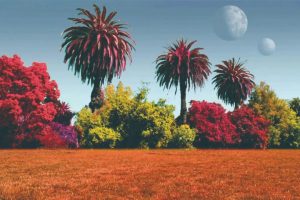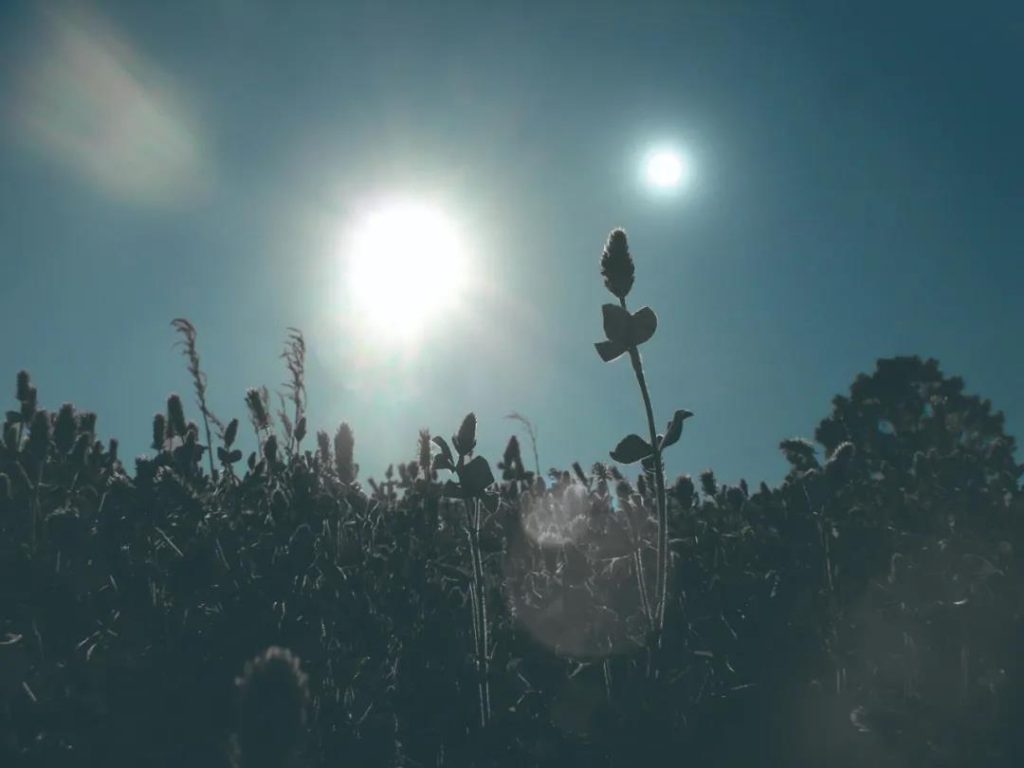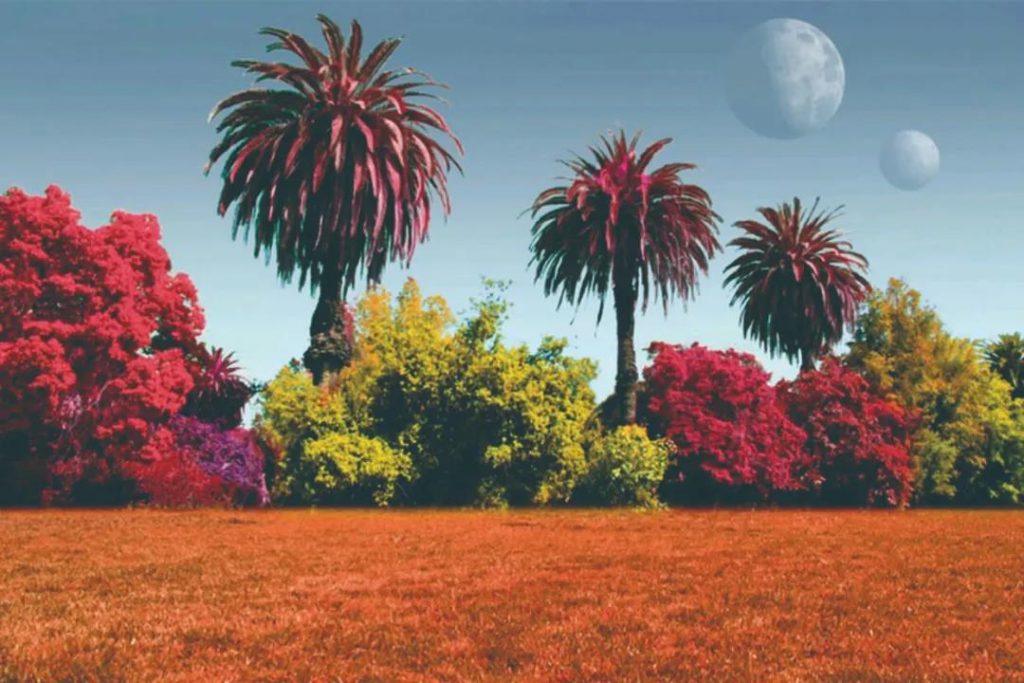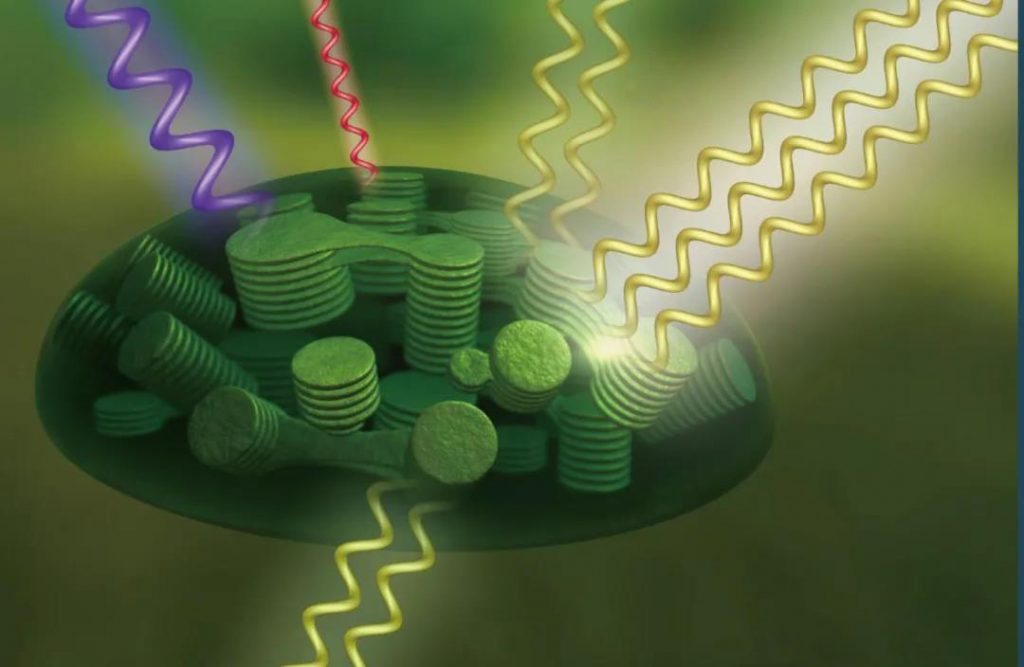
On the earth, the leaves of most plants are green because they use the chlorophyll in the leaves to photosynthesize and convert sunlight into energy. In optics, the leaves are green because they absorb almost all photons in the red and blue regions of the spectrum, and only absorb less than 90% of the green light. This is a strange phenomenon because most of the energy radiated by the sun is in the green part of the spectrum. Why do plants reflect green light? Is the photosynthesis of plants on other planets the same as on Earth?
Plants’ wisdom of trade-offs
In a recent study, Nathaniel Garber, a physicist at the University of California, finally found the reason why plants do not fully absorb green light during photosynthesis. Nathaniel Garber’s field of expertise is to study solar cells. He has been thinking about how to make a green light collector that can absorb the highest energy from the solar spectrum. In 2016, he remembered the fact that plants would give up about 10% of the green light. In order to figure out what happened in the process of photosynthesis, he formed a team to study this problem with some botanist partners.

Around dim stars, or on planets farther from bright stars, plants may appear dim.
Because they work harder to capture visible light, even light that is close to the infrared and ultraviolet spectrum.
We all know that the first step of photosynthesis occurs in a light-collecting complex, which is a network of proteins containing pigments that form an antenna complex that can capture photons. The chlorophyll in green plants absorbs light and transfers energy to the reaction center, where it begins to produce optical energy for use by cells. At this stage, almost all the absorbed light is converted into electrons that can be used by the system.
However, the antenna complex inside the cell has been moving, this movement reduces the efficiency of energy flow; in addition, the rapid fluctuation of the light intensity falling on the plant will also interfere with the input of light energy. As a physicist who studies solar cells, Garber clearly knows that stable electrical energy input and stable chemical energy output are the most ideal state of the battery-too few photons input to the reaction center will lead to energy failure; Too much will cause various overcharging phenomena. In this way, green light has the strongest energy. If the input of green light is too fast and too much during the absorption process, will plants also experience “overcharging”?
To verify it, Garber and his colleagues developed a model of a plant lighting system and placed it on the tree canopy. The results show that when too much green light is absorbed, the energy flow of the plant is disturbed, and the energy utilization efficiency also becomes low, which shows that a large amount of green light absorption is harmful to the plant.
It can be seen that the photosynthesis strategy of plants is to seek development in stability, rather than “greedy to take all.” Fortunately, plants are “not greedy.” If the plants on the earth absorb more green light, the plants we see may be black.
Photosynthesis is so important to life on Earth, and it may also play an important role on other planets. So is the photosynthesis of other planets the same as that of the earth?
Alternative photosynthesis
In recent years, some scientists believe that the surrounding red dwarfs may be ideal places to search for extraterrestrial life, because of their small size, it is easier to find Earth-sized planets around them. In addition, red dwarfs have a long lifespan, which can provide a long enough time for the emergence and evolution of life. However, these stars also have shortcomings-the temperature is too low, the surface temperature is only about 3000K, so they are red as the name suggests, relatively dim. So is there an Earth-like biosphere on the planets surrounding them?
To solve this problem, a group of researchers studied the wavelength of light necessary for photosynthesis. The wavelength of this visible light called “photosynthetic active radiation (PAR)” is between 400 nanometers and 700 nanometers. The researchers built a model and added the data to the model to calculate how much radiation the Earth would receive if it orbited different types of stars, and thus the rate of PAR photon generation for a given star’s luminosity. The results show that compared to the sun, red dwarfs emit more low-energy photons and emit less light, which means they emit fewer PAR photons per second, so the planets orbiting them will also receive less PAR. . The final results are not optimistic. Researchers believe that there may not be life around red dwarfs.

On planets around stars brighter than the sun, plants may reflect red and yellow light,
It also reflects too much blue light, so the color of the plant is very bright.
However, in 2018, researchers from Imperial College London in the United Kingdom discovered a special photosynthesis of blue-green algae in Yellowstone National Park in the United States. Usually photosynthesis is mainly carried out by the green pigment chlorophyll a. All plants and photosynthetic bacteria have chlorophyll a. Researchers have found that under appropriate conditions, another pigment called chlorophyll f can also perform photosynthesis, and It uses lower energy infrared light for photosynthesis. Chlorophyll f is the fifth known molecular type of chlorophyll on earth. It was first discovered in 2010 by researchers from the University of Sydney, Australia in the stromatolites of Shark Bay, Western Australia. Stromatoliths are rock-like structures built by photosynthetic bacteria, which are called cyanobacteria.
This discovery means that exoplanets, such as red dwarfs, may also have life on them, and they use infrared light for photosynthesis like cyanobacteria. In this way, scientists need to re-adjust the conditions for searching for extraterrestrial life.
So, what are the photosynthetic organisms of outer planets like?
Extraterrestrial iridescent plants
Because the stars around each planet are different, the atmosphere of each planet is also different, and the light absorbed and reflected by photosynthetic organisms may also be different. Therefore, most photosynthetic organisms on exoplanets may not be green, but other colors such as black, red, yellow or blue.
Some imaginative scientists are thinking about how different photon numbers and energies drive photosynthesis in other planetary environments. They analyzed the radiation emitted by the star around the target planet and calculated the stellar radiation obtained from the planet’s surface, so as to determine the spectrum most conducive to the planet’s photosynthesis. The results show that the color of photosynthetic organisms on a planet largely depends on what kind of star the planet orbits.

For example, type F stars are larger, hotter and emit more high-energy light. Plants irradiated by type f main sequence stars will get a lot of blue light, which is likely to reflect too many high-energy photons. Therefore, plants on planets around type f main sequence stars may be blue. M-type stars are smaller and colder, emitting low-energy photons. Photons are very valuable on planets around type M stars, which may prompt photosynthetic organisms there to evolve the ability to absorb different spectra. This means that if we have the opportunity to go to an exoplanet around an M-type star, maybe we will see plants with colorful leaves, or even black plants that absorb all the visible spectrum.
As scientists know more and more about photosynthesis, we not only have a deeper understanding of the energy acquisition process of life on earth, but also provide clues for the search for extraterrestrial life. Maybe in the future, we can find another life paradise according to the spectrum of exoplanets, and we may also see iridescent creatures there.
Comments